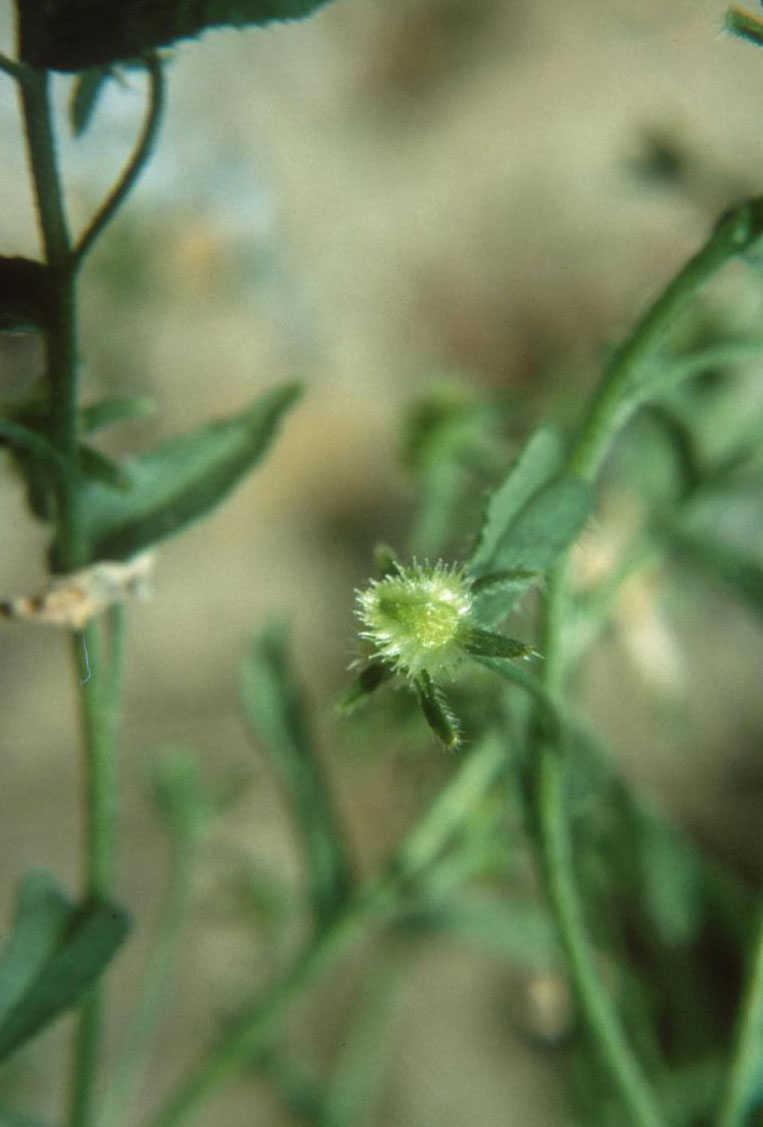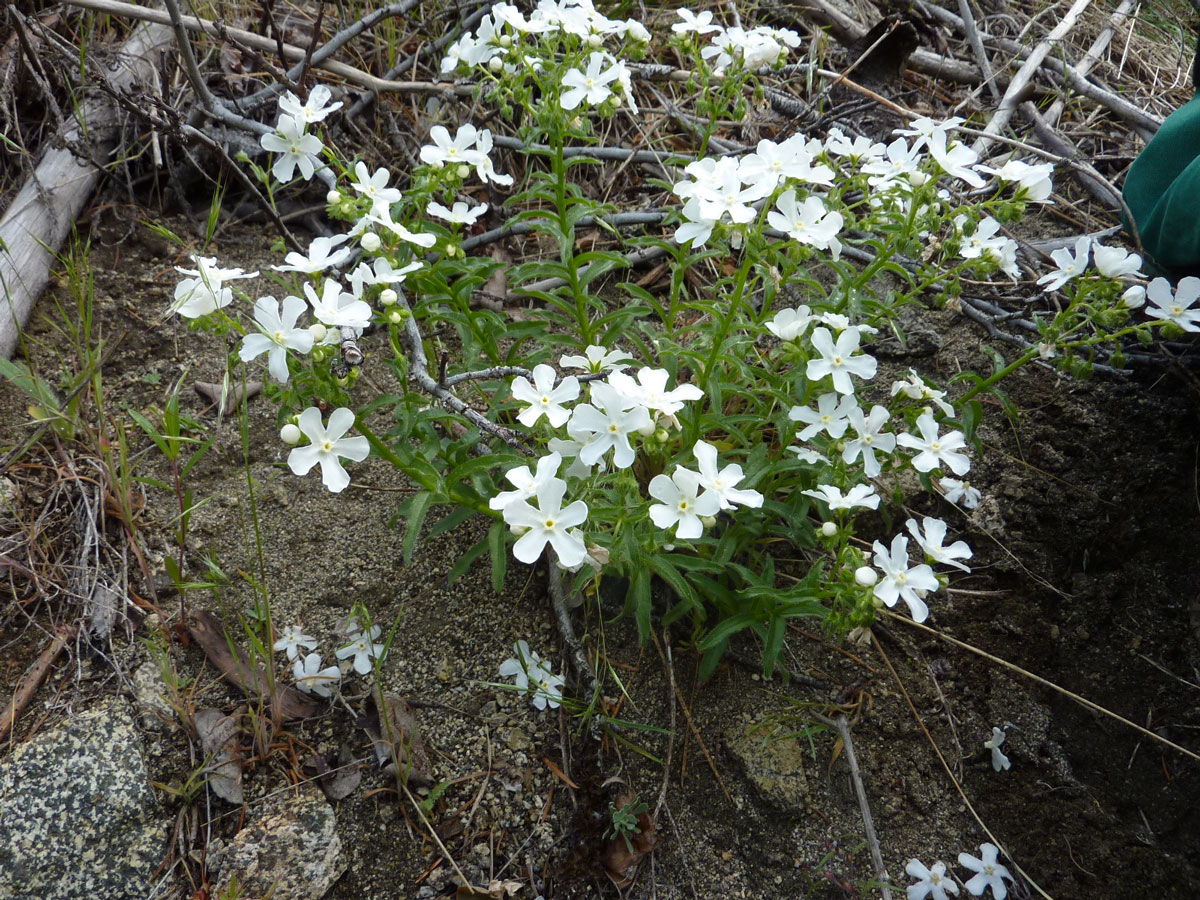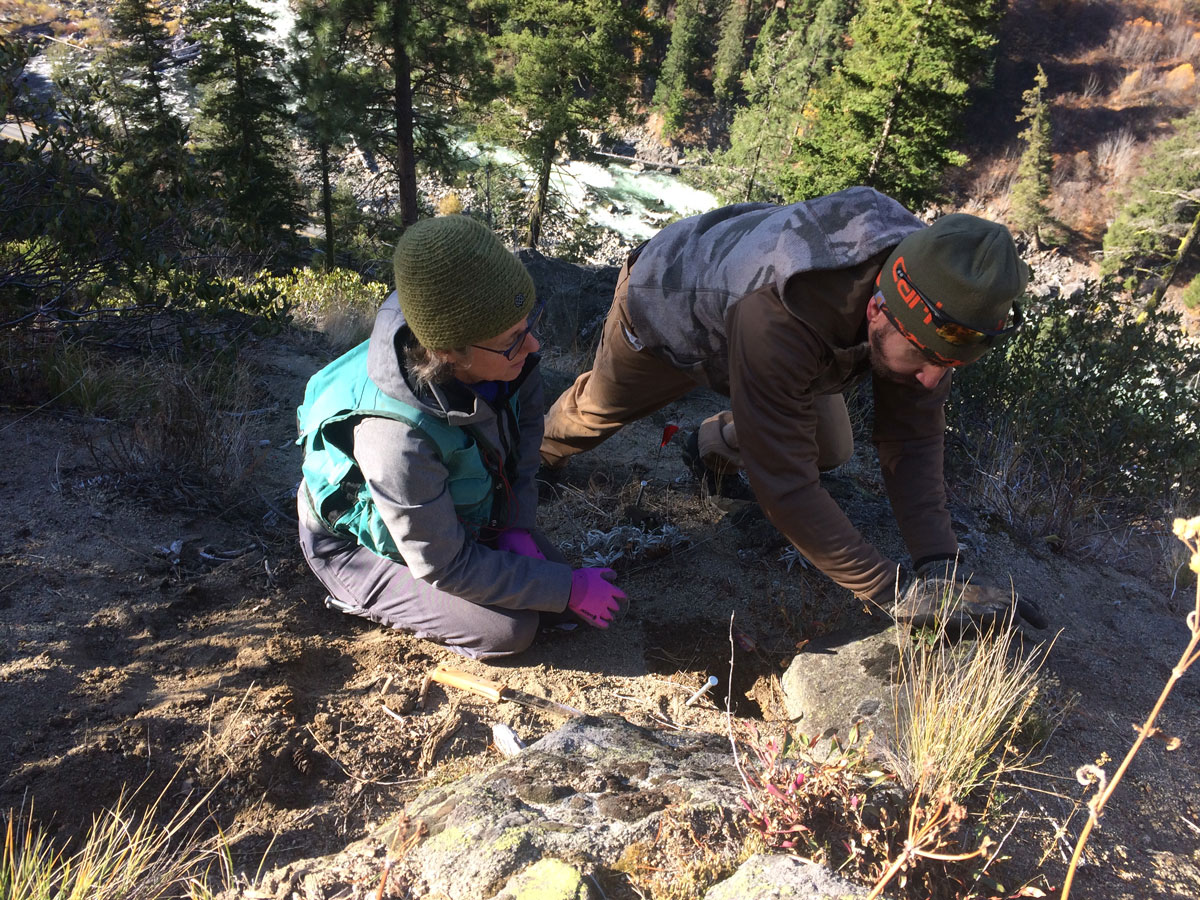The Lone Population on a Slippery Slope
As Wendy Gibble, Program Manager for the Rare Plant Care and Conservation Program (Rare Care) at University of Washington Botanic Gardens, spends hours upon hours staring into a microscope, gently scraping the seed coat off the root radicle of showy stickseed seeds, she has plenty of time to contemplate how the need for this meticulous step might relate to a species adaption. Showy stickseed (Hackelia venusta), like many other Hackelia species, inhabits steep slopes with loose, well-drained substrates and low competing vegetation. Wendy can imagine the seeds tumbling down a steep slope, scraping between sand and rocks, not germinating until the soil environment is just right. This is just one of the ecological principles that she enjoys contemplating while growing increasingly familiar with this special, endangered plant.
Though showy stickseed may be adapted to the loose-soiled and steep environment of Washington’s Okanogan-Wenatchee National Forest, the location of the species’ only known population in the Cascades, its human helpers are definitely not. The Rare Care team and their partners find the terrain highly challenging for conducting monitoring and out planting efforts, in terms of safety and limiting impact on the site. The soils are shallow, well-drained sand with low organic matter content and high rock and gravel content. This habitat was historically maintained by frequent wildfires that kept the understory vegetation, particularly shrub cover, sparse. With today’s emphasis on wildfire control, however, human efforts are often needed to reduce tree and shrub cover. Although the U.S. Forest Service has been able to remove some trees when snow is present, other vegetation controls would be too disruptive to the soil. Even otherwise low-impact monitoring activities need to be limited to prevent soil disturbances that might bury or damage plants. To develop a safe and statistically robust method to track changes in population, Rare Care is currently working on a monitoring plan that uses photo points, point counts and other no-impact techniques.

Showy stickseed’s limited range and habitat specificity complicate recovery efforts, by reducing options for establishing new populations to build redundancy. The sole existing population includes just 300 individuals. This makes it exceedingly vulnerable to catastrophic loss from an unpredictable event, such as a landslide. Wendy’s team and others working with the species are currently searching for reintroduction sites to develop three stable self-sustaining populations, the goal of this endangered species’ recovery plan. Each site needs to support an average of 1,000 individuals. Finding suitable sites to introduce new populations has been difficult, however, and as yet none have been found.
Despite the challenges, the Rare Care team is working steadily towards showy stickseed’s recovery. An early step was learning how to grow the species, which proved quite difficult. Prior to 2004, only limited success with seed germination was achieved, and micropropagation techniques were instead used to create 30 clones placed in an introduction site. Techniques for seed germination were subsequently developed by Jeanie Taylor, a graduate student of Dr. Sarah Reichard, and refined by Rare Care, providing today’s preferred method for propagation. The seeds require cold stratification and embryo excision (hence Wendy’s hours under a microscope) for successful germination. With propagation methods now established, the team’s recent focus has been on augmenting the existing populations and attempting an introduction at a new site.

As an aid for locating suitable sites, Rare Care completed a physical and vegetation characterization of showy stickseed’s habitat to inform habitat modeling efforts. The team is currently working with University of Washington Professor Monika Moskal and her graduate student Drew Foster to complete a habitat characterization model this spring and evaluate the use of drones to identify potential areas with suitable habitat. While the site search is in progress, the U.S. Forest Service will develop a habitat management plan, working with Rare Care and the U.S. Fish and Wildlife Service to set the endangered species on a path towards recovery.


Why is so much effort is being put into one small species? Assigning a measurable value to a single species, especially one that seems to live right on the edge of survival, can be difficult. Yet so much is unknown about the plant’s role in the broader ecosystem. What insects or other life forms does this species support? What are its potential effects on evolutionary change? We do know that the habitat in which showy stickseed occurs is unique and may harbor other unique taxa. Whether or not this species was abundant at one time is unclear, as surveys for additional populations occurred long after fire suppression had fundamentally altered its dry conifer forest habitat. Will this be a high-elevation species that blinks into and out of existence over the long arc of evolution? Or will adaptation lead to species survival in the hotter, drier conditions of future climate scenarios?
Regardless of success over geologic time, showy stickseed offers a noteworthy lesson in species radiation and adaptation. One thing is certain: humans have impacted and changed its environment. Loss of biodiversity, both for this species and others it touches ecologically and evolutionarily, is a consequential outcome of our activities. And so Wendy, and many plant conservationists like her, follow an imperative call to do all that can be done to preserve this one population on the edge.